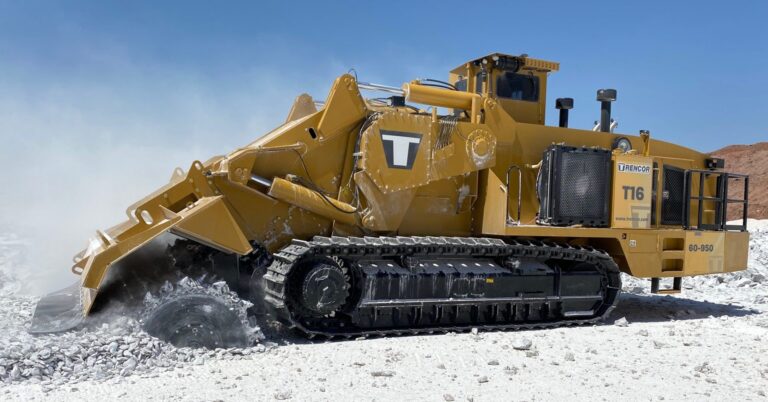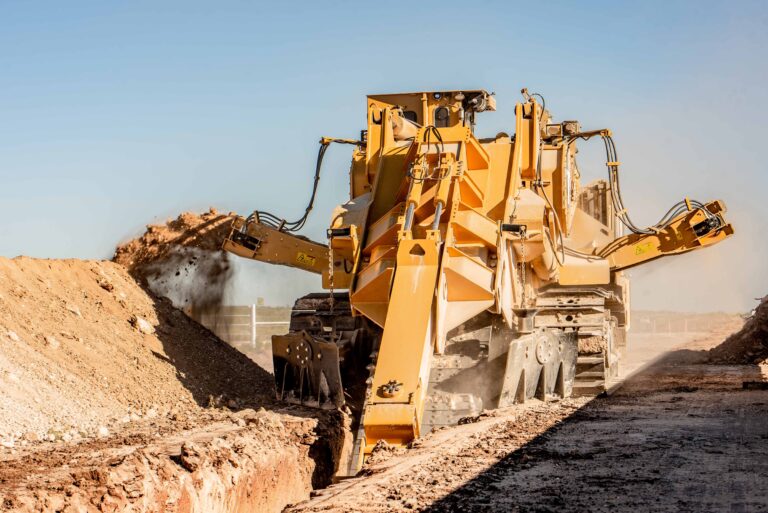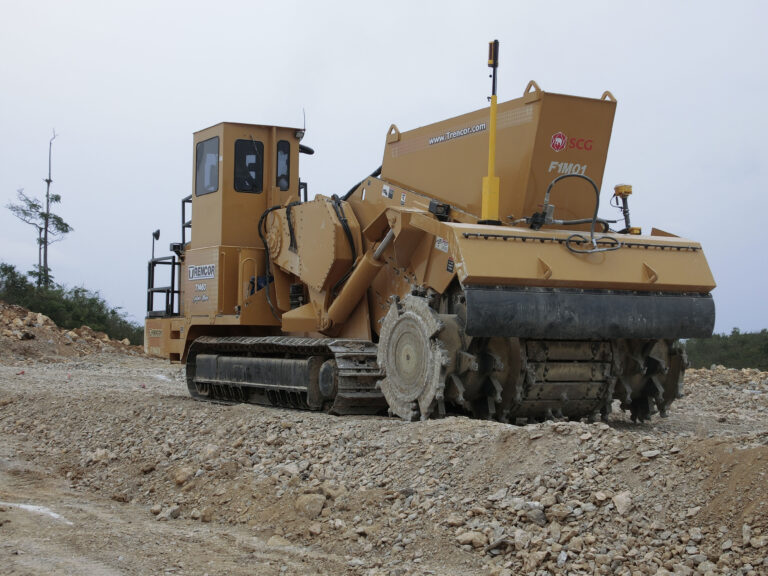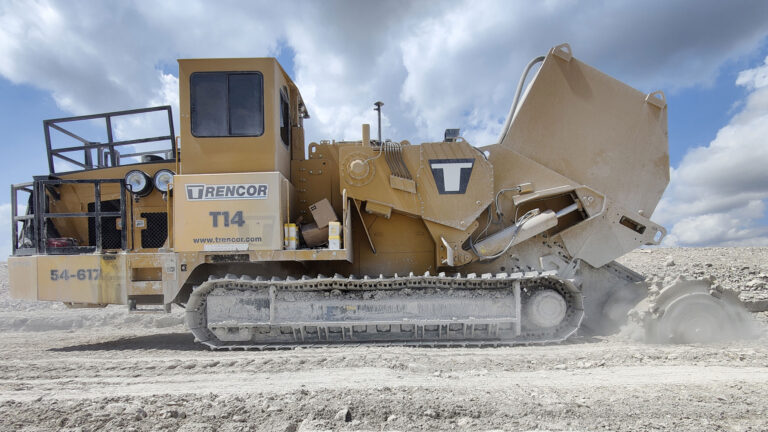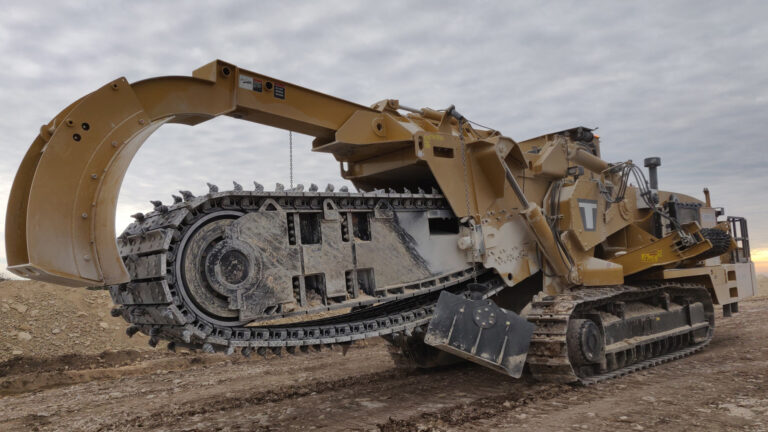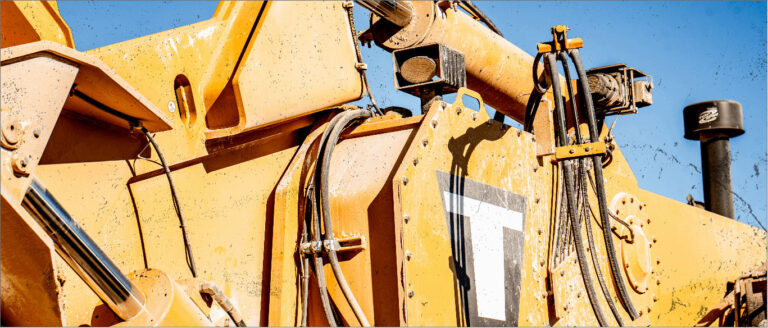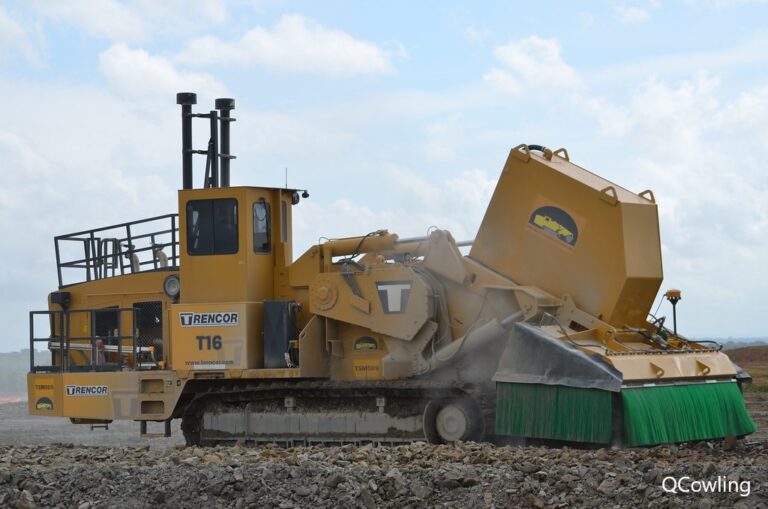Joe Parsons, Trencor, USA, presents three ways a surface miner can help overcome modern mining challenges.
Global regulatory changes within the mining industry are forcing companies to re-evaluate how they can overcome growing challenges, such as stringent regulations, jobsite risk, productivity, and costs. In fact, EY’s latest survey of global mining and metals executives — ‘Top 10 business risks and opportunities for mining and metals in 2022’ — found that mining and metals companies rank environmental and social issues as their number one risk. A second factor, that has made the list for the third consecutive year, is how to best manage jobsite productivity and rising costs. In addition to risks and opportunities that shift from year to year, workplace health and safety is constantly top of mind on any mining jobsite.
These industry-specific improvements on standards and implementing best practices have made it increasingly difficult to continue extracting rock conventionally, which is compelling mining companies to seek alternative, less-intrusive methods. One solution that many companies are turning to is the use of surface miners. As the use of surface miners in environmentally sensitive areas has grown in popularity, mining companies have increasingly discovered the practice’s operational, business and environmental benefits.
Benefit 1: Improve environmental and social impact
Mining and metals companies are heightening their focus on environmental, social, and governance (ESG) measures with the goal of making a positive impact in the communities where they operate. While an abundance of factors plays into effective ESG strategies, a key part of this initiative is re-evaluating the traditional mining methods used on a jobsite. By auditing operations, companies can identify the most disruptive methods and begin looking at alternatives that may be less intrusive to the environment and community.
A common mining method that has been an area of contention for decades is blasting because it produces ground vibrations, airwaves, flyrock, fumes, dust, and noise, which can cause adverse effects to the environment and surrounding community. To address these issues, a growing number of standards have been put in place to regulate blasting, making it increasingly difficult. One alternative to help companies achieve ESG goals and operate within regulations without blasting is using a surface miner to extract minerals and ores at mining operations.
Unlike traditional blasting practices, a surface miner cuts and crushes in-situ ore in a simultaneous operation. A typical machine is equipped with a mechanically-driven cutting drum that rotates, cuts layers of rocks, and crushes the material as the surface miner moves forward. The material can then be left in place, windrowed, loaded onto a truck or conveyed away, depending on the needs of the mine.
Since every step of the surface miner operation takes place in a highly controlled area, it greatly reduces noise levels and dust. This makes it easier for mining jobsites to comply with environmental regulations and ensure that operations are far less disruptive to nearby communities.
Benefit 2: Maximize productivity and revenue
Improving productivity and reducing costs go hand-in-hand. These two factors are crucial to getting a job done on time and within budget. To achieve these goals, it is important to implement operations that not only improve productivity in the short-term, but also provide a path to long-term cost benefits.
For example, surface miners significantly decrease post-processing time and costs. Conventional mining methods such as blasting, ripping, or using hydraulic hammers, produce large rock fragmentation that adds steps to the post-processing process and requires the use of expensive primary crushers. The locations of these primary crushers at a safe distance from the mining area increasing the hauling distance to the hoppers. In contrast, surface miners reduce crushing and screening needs by producing a more consistently sized crushed material, small enough to bypass a primary crusher. The crushed rock can be directly conveyed out of the mining area from a centrally-located point for post-processing closer to the plant.
The use of surface miners also presents companies with the ability to mine ore consistent of different qualities selectively. If equipped with a GPS system, surface miner operators can easily control how deep a cut is made, allowing for crews to mine selectively following the contours of ore bodies. This paves the way for new business and revenue opportunities by enabling companies to mine deposits that previously may not have been feasible or financially lucrative using traditional methods.
Benefit 3: Reduce jobsite risk
To keep crews safe, mining companies need to evaluate high-risk activities and implement methods that mitigate them. One major risk factor on many mining jobsites is flyrock produced from blasting. Flyrock is rock that is propelled beyond the blast area due to the blasting process and can be extremely dangerous.
According to the US Department of Labor Mine and Safety Health Administration (MSHA), “[flyrock] is responsible for a large portion of all blasting-related injuries and fatalities. Flyrock is a potential hazard anytime and anywhere there is blasting.” In one tragic instance shared by MSHA, a mining mechanic had just completed his shift and was in an equipment parking / service area approximately 1,500 feet from the area being blasted. The victim was struck by flyrock from the blasting operations and was fatally injured. In another instance, flyrock left a mine site during a blast and struck the windshield of a pickup truck traveling on a public road near the mine site. Thankfully, the driver and passenger both received only minor injuries. As an alternative, because the cutting and crushing process keeps the cuttings on the ground, surface miners virtually eliminate the risk of flyrock.
Beyond flyrock, mining companies that use surface miners are able to reduce risks inherent in the use of explosives and enable miners to work with fewer regulations and permits. For instance, the use of explosives on a jobsite rightfully requires that a certified blaster lead the operations, limiting the number of employees who can carry out this step. In comparison, because a surface miner eliminates the need for using or storing explosives, and therefore presents a low risk, it does not require a certification to operate. Whether a crew member has been on the site for one day or in the industry for 20 years, they are able to feel confident they can safely operate the machine.
Siam Cement Group transitions to surface mining
Siam Cement Group (SCG), a cement company from Thailand, first used surface miners in place of conventional drill and blast mining at a shale quarry adjacent to a road connecting neighboring villages. SCG management decided blasting was an unsafe option because of the proximity of the village populace, and that surface miners would be a cost-competitive solution while meeting their corporate governance objectives.
Successful implementation of a surface miner machine on the Thailand project resulted in SCG purchasing four surface miners for limestone exploration at a new cement plant in Indonesia. On the jobsite in Indonesia, the use of surface miners was required because the concession area was surrounded by villages.
The mining project was carefully planned and designed to maximize the use of surface miners from the earliest stages of construction. First, the surface miners were used to create haul roads, level an area for a semi-mobile crushing plant and cut a conveyor landing area with a 10.5 degree slope. Then, they were employed to open up the mining areas as various locations on-site in order to blend the limestone to acheive the desired quality. Additionally, the mining areas were cut on grade by using GPS grade control for de-watering purposes. This is an ongoing requirement because the area experiences heavy annual rainfall, especially during the length monsoon season.
The mining operation has been in full operation since August 2015 and is the first non-drill and blast operation for SCG. The plan, with a capacity of 1.8 million tpy, fully relies on the surface miners for their limestone production, which operate only during daylight to minimize the impact of mining on the local community.
Build a surface miner fit for any jobsite
When considering the right surface miner for a job, companies will want to identify jobsite ground conditions and what operations the surface miner will be used for first. Next, they will want to select an experienced OEM partner who can help manage project operating expenses while providing beneficial features, such as mechanical drive systems and intelligent control systems. The right partner will work with a company to plan, design, and build a surface miner that can tackle any mining jobsite.
Adjusting and adapting to overcome today’s challenges
It is often difficult to move away from traditional practices, but modern challenges require modern solutions. As the mining industry evolves, companies will develop even more robust ESG strategies to minimize social and environmental impacts on the surround communities, and implement mining methods to maximize productivity and revenue, while striving to keep their workers safe. Integrating a surface miner into mining operations may be the answer to help address today’s mining challenges and the key to overcoming future challenges.

